-
Bidding for Firms: Subsidy Competition in the United States Journal of Political Economy (IF 6.9) Pub Date : 2025-06-03
Cailin SlatteryJournal of Political Economy, Ahead of Print.
-
Corrigendum to “Do green energy markets catch cold when conventional energy markets sneeze?” [Energy Economics Volume 127, Part A, November 2023, 107035] Energy Econ. (IF 13.6) Pub Date : 2025-05-29
Amar Rao, Brian Lucey, Satish Kumar, Weng Marc Lim -
Sexual Harassment in Public Spaces and Police Patrols: Experimental Evidence from Urban India Q. J. Econ. (IF 11.1) Pub Date : 2025-05-29
Sofia Amaral, Girija Borker, Nathan Fiala, Anjani Kumar, Nishith Prakash, Maria Micaela SviatschiWe conduct a randomized controlled trial to evaluate the impact of an innovative police patrol program on sexual harassment in public spaces in Hyderabad, India. In collaboration with the Hyderabad City Police, we randomize exposure to police patrols and the visibility of officers by deploying both uniformed and undercover officers across 350 hotspots. To assess the effect, we implement a novel, high-frequency
-
Too Levered for Pigou: Carbon pricing, financial constraints, and leverage regulation J. Financ. Econ. (IF 10.4) Pub Date : 2025-05-29
Robin Döttling, Magdalena Rola-JanickaWe analyze optimal carbon pricing under financial constraints and endogenous climate-related transition and physical costs. The socially optimal emissions tax may be above or below a Pigouvian benchmark, depending on the strength of physical climate impacts on pledgeable resources. We derive necessary conditions for emissions taxes alone to implement a constrained-efficient allocation, and show a cap-and-trade
-
Loss functions in regression models: Impact on profits and risk in day-ahead electricity trading Energy Econ. (IF 13.6) Pub Date : 2025-05-28
Tomasz Serafin, Rafał WeronWe study the impact of the loss function used to estimate the parameters of a regression-type model on profits and risk in day-ahead electricity trading. To provide practical insights, we consider a strategy that incorporates battery storage and includes realistic operating costs in the calculation of revenues. Using 2021-2024 data from the German market as the testing ground, we provide evidence that
-
Beyond borders: Estimating the marginal emission factor of electricity trade Energy Econ. (IF 13.6) Pub Date : 2025-05-28
Filippo Beltrami, Luigi Grossi, Mario LiebensteinerPrevious research has largely overlooked electricity trade when estimating marginal emission factors (MEFs), despite its growing significance in Europe and beyond. This study introduces a robust and consistent econometric framework to accurately estimate the MEFs for trade, demand, and different supply technologies in a highly interconnected market. We use exogenous supply shocks (variations in wind
-
Manufacturing Revolutions: Industrial Policy and Industrialization in South Korea Q. J. Econ. (IF 11.1) Pub Date : 2025-05-28
Nathan LaneI study the impact of industrial policies on industrial development by considering an important episode during the East Asian miracle: South Korea’s heavy and chemical industry (HCI) drive, 1973–1979. Based on newly assembled data, I use the introduction and termination of industrial policies to study their impacts during and after the intervention period. (1) I reveal that heavy-chemical industrial
-
Navigating crude oil volatility forecasts: Assessing the contribution of geopolitical risk Energy Econ. (IF 13.6) Pub Date : 2025-05-27
Panagiotis Delis, Stavros Degiannakis, George FilisMedia evidence and previous research have established that geopolitical risk is an important driver of crude oil price volatility. In this paper, we assess whether the importance of geopolitical uncertainty is also ”translated” into valuable predictive information for oil price volatility forecasts. To do so, we construct a ”beauty contest” where we assess the incremental predictive content of geopolitical
-
The Optimal Taxation of Couples Q. J. Econ. (IF 11.1) Pub Date : 2025-05-27
Mikhail Golosov, Ilia KrasikovWe study optimal nonlinear taxation of single and married households. Taxes on couples depend on the earnings of both spouses and are an example of multidimensional tax schedules. We develop novel analytical techniques to study properties of such taxes. We show that the optimal marginal taxes for married individuals are generally lower than for single individuals because resource sharing in couples
-
Economic links from bonds and cross-stock return predictability J. Financ. Econ. (IF 10.4) Pub Date : 2025-05-27
Jian Feng, Xiaolin Huo, Xin Liu, Yifei Mao, Hong XiangIdentifying firms’ bond-market-specific economic links through credit-rating comovement of their corporate bonds, a long-short strategy for stocks based on these links generates a risk-adjusted alpha of 0.45% per month, which cannot be explained by existing economic links in the literature. Market segmentation between the equity and bond markets appears to be the underlying mechanism: (i) The cross-return
-
Conditional risk and the pricing kernel J. Financ. Econ. (IF 10.4) Pub Date : 2025-05-27
David Schreindorfer, Tobias SichertWe propose a statistical methodology for jointly estimating the pricing kernel and conditional physical return densities from option prices. Pricing kernel estimates show that negative stock market returns are significantly more painful to investors in low-volatility periods. Density estimates reflect a significantly positive risk–return trade-off, suggest that Martin’s (2017) lower bound on the equity
-
CRISK: Measuring the climate risk exposure of the financial system J. Financ. Econ. (IF 10.4) Pub Date : 2025-05-27
Hyeyoon Jung, Robert F. Engle, Richard BernerWe develop a market-based methodology to assess banks’ resilience to climate-related risks and study the climate-related risk exposure of large global banks. We introduce a new measure, CRISK, which is the expected capital shortfall of a bank in a climate stress scenario. To estimate CRISK, we construct climate risk factors and dynamically measure banks’ stock return sensitivity (that is, climate beta)
-
Surviving the fintech disruption J. Financ. Econ. (IF 10.4) Pub Date : 2025-05-27
Wei Jiang, Yuehua Tang, Rachel J. Xiao, Vincent YaoWe examine the impact of fintech on firm labor demand, job turnover, and firm performance. Occupations with higher exposure to fintech experience a net decline in job postings and employment, though both complementary and substitutive effects emerge across different sectors. Fintech blurs traditional industry boundaries, creating demand for workers with a combination of finance and technology skills
-
What is the focus of energy supply chain relationship management during geopolitical risks? Evidence from the stock market based on transaction cost economics Energy Econ. (IF 13.6) Pub Date : 2025-05-26
Shizhen Bai, Hao He, Chunjia Han, Mu Yang, Wen-Long Shang, Weijia FanThis study examines B2B relationship management practices in energy supply chains under geopolitical risks and their impact on stock market volatility. We analyze U.S. energy firms' earnings conference calls across three dimensions: intra-firm managerial behavior, inter-firm relationship management, and relationship evaluation. Employing Word2Vec and structural topic modeling, we identify specific
-
Corrigendum to “New climate policy, resource abundance, and sectoral FDI” Energy Econ. (IF 13.6) Pub Date : 2025-05-26
Nadia Doytch, Mohamed Elheddad, Fidel Perez-Sebastian -
The economics of “Buy Now, Pay Later”: A merchant’s perspective J. Financ. Econ. (IF 10.4) Pub Date : 2025-05-26
Tobias Berg, Valentin Burg, Jan Keil, Manju Puri“Buy Now, Pay Later” (BNPL) is a key innovation in consumer payments. It bundles the sale of a product with a subsidized loan, effectively offering lower prices to low-creditworthiness customers. BNPL thereby allows merchants to price-discriminate among customers with different willingness-to-pay. Consistent with a price-discrimination mechanism, we show that BNPL increases sales by 20%, driven by
-
Differential access to dark markets and execution outcomes J. Financ. Econ. (IF 10.4) Pub Date : 2025-05-26
James Brugler, Carole Comerton-FordeDark pools can restrict access for specific trader types. We compare execution outcomes between dark pools that restrict high frequency trader access and those that do not. We find that trades executed in dark pools with more access restrictions have less order flow information leakage, adverse selection risk and post-trade order imbalances than trades in less restricted pools. Evidence from exogenous
-
Printing away the mortgages: Fiscal inflation and the post-covid boom J. Financ. Econ. (IF 10.4) Pub Date : 2025-05-26
William Diamond, Tim Landvoigt, Germán Sánchez SánchezWe analyze interactions between fiscal and monetary stimulus in a new Keynesian model with nominal mortgage debt that can be inflated away. Redistributive transfers are most impactful when followed by a temporary deviation from inflation-targeting monetary policy. Unlike other fiscal policies, redistribution causes inflation even in the absence of long-run debt sustainability problems, and inflating
-
Private equity in the hospital industry J. Financ. Econ. (IF 10.4) Pub Date : 2025-05-26
Janet Gao, Yongseok Kim, Merih SevilirWe examine the survival prospects, employment profiles, and patient outcomes at private equity (PE)-acquired hospitals. Target hospitals maintain their survival rates while significantly reducing employment and wage expenditures. The number of core medical workers drops temporarily, but returns to its pre-acquisition level in the long run. However, administrative job and wage cuts persist over the
-
The impact of prices on analyst cash flow expectations: Reconciling subjective beliefs data with rational discount rate variation J. Financ. Econ. (IF 10.4) Pub Date : 2025-05-26
Aditya ChaudhryI show that prices impact analyst cash flow expectations and argue this impact can partially reconcile subjective beliefs data with asset pricing models in which investors have rational expectations and discount rate variation drives prices. Previous work argues that correlations of biased analyst cash flow expectations with prices and future returns contradict rational models and imply biased investor
-
Disjunct realities: understanding planning and governance through imaginaries of mega-infrastructure projects Camb. J. Reg. Econ. Soc. (IF 5.6) Pub Date : 2025-05-26
Neha SamiInfrastructure networks are emerging as critical technological and physical assets of modern urban regions. These networks are complex, multi-layered, and have power and politics embedded within them, with impact being felt across different scales. Building on the idea that planning offers different visions, fantasies or imaginations of the future, I look specifically for agency and where it lies in
-
Combating Political Corruption with Policy Bundles Journal of Political Economy (IF 6.9) Pub Date : 2025-05-23
Frederico Finan, Maurizio MazzoccoJournal of Political Economy, Ahead of Print.
-
Unpacking willingness in family firms facing the digital transformation Small Bus. Econ. (IF 6.5) Pub Date : 2025-05-24
Samuel Appleton, Marco Mismetti, Dominik Matt, Alfredo De MassisDigital transformation introduces a new set of parameters for firm innovation. Existing literature has found that family firms vary on their willingness to innovate. However, explanations of the factors that lead to a family firm’s (un)willingness to act remain scarce. Even more scarce are studies exploring the family firm’s (un)willingness in the digital transformation. The digital transformation
-
Bank stress testing, human capital investment and risk management J. Financ. Econ. (IF 10.4) Pub Date : 2025-05-24
Thomas Schneider, Philip E. Strahan, Jun YangThis paper studies banks’ investment in risk management human capital following the Global Financial Crisis and the advent of stress testing. Our results suggest that ‘Too Big to Fail’ distortions may have weakened large banks’ incentive to invest in risk management talent. Stress testing, which focuses on the largest banks, spurred demand for skilled quantitative risk managers, but only narrowly in
-
Climate transition risks, ESG sentiment and market value: Insights from the European stock market Energy Econ. (IF 13.6) Pub Date : 2025-05-22
Brahim Gaies, Najeh Chaâbane, Opeoluwa Adeniyi Adeosun, Jean-Michel SahutThis study explores the links between climate transition risks, ESG sentiment and stock prices in the European context. It provides novel insights into the literature of sentiment-related stock markets, ESG's impact on firm market value, and climate-related financial analysis. Using an advanced methodology, including the time-varying parameter vector autoregressive (TVP-VAR) connectedness method and
-
The proof of the pudding is in the heating: A field experiment on household engagement with heat pump flexibility Energy Econ. (IF 13.6) Pub Date : 2025-05-22
Baptiste Rigaux, Sam Hamels, Marten OvaereAs renewable energy grows, flexible electricity demand becomes essential. We conducted a field experiment with nine heat pumps in well-insulated homes near Ghent, Belgium. During 287 flexibility interventions, we remotely deactivated heating until indoor temperatures reached predefined thresholds or households manually overruled the intervention. After initiating a flexibility event, the heat pump
-
Energy outages, in-house power generators, and capacity utilization: The case of African manufacturing Energy Econ. (IF 13.6) Pub Date : 2025-05-22
Dengjun Zhang, Nazif Durmaz, John M. KagochiThis study evaluates the impact of energy outages and in-house power generators on capacity utilization among approximately 12,000 African firms. Energy outages and in-house power generators are measured by the days that firm experienced energy outages and the share of self-generated electricity as a proportion of total electricity consumed, respectively. We further construct quantile dummies based
-
What killed HS2? Explaining the loss of political support for the UK’s high-speed rail megaproject Camb. J. Reg. Econ. Soc. (IF 5.6) Pub Date : 2025-05-22
Dan DurrantThrough the case of a hegemonic discourse formed around the UK’s cancelled mega-transport project High-Speed Two (HS2), this paper analyses the circumstances of its abandonment. The acquisition and loss of symbolic power are explained through different master and meta narratives. Mechanisms are identified through which HS2 became an ‘empty signifier’ temporarily filled with symbolic value, standing
-
A mega-rescaling-project: state powers and intra-state conflicts in the development of the Grand Paris Express station districts Camb. J. Reg. Econ. Soc. (IF 5.6) Pub Date : 2025-05-22
Antoine GosnetThis article examines a megaproject through the lens of various layers of the State, each of which relies on State power in different ways to gain legitimacy for intervention in regional and local planning. It aims to dissect the State’s power into different entities, reflecting the successive phases of rescaling that have taken place in France and the Paris City-Region since the 2010 announcement
-
Can proactive electric transmission planning cost-effectively mitigate carbon emissions? A Western North America case study Energy Econ. (IF 13.6) Pub Date : 2025-05-21
Yinong Sun, Qingyu Xu, Benjamin F. HobbsInvestment in transmission is recognized as essential to power system decarbonization, and at the same time it has been established that proactive grid planning can help mitigate market failures in electricity markets such as market power. In this paper, we bring these ideas together by exploring the extent to which transmission planning can proactively and cost-effectively reduce carbon emissions
-
Exploring the role of artificial intelligence as a catalyst for energy technology innovation Energy Econ. (IF 13.6) Pub Date : 2025-05-21
Mingxing Shao, Lei Wen, Sifei Li, Binyue HuangArtificial intelligence (AI) has a strong spillover effect and acts as an essential propellant for advancements in technology and development. Using A-share listed enterprises between 2007 and 2022 as the sample, we assess the influence of AI on energy technology innovation (ETI). Our findings highlight that AI can promote ETI primarily by improving the human capital structure and encouraging enterprises
-
Collective Bargaining for Women: How Unions Can Create Female-Friendly Jobs Q. J. Econ. (IF 11.1) Pub Date : 2025-05-21
Viola Corradini, Lorenzo Lagos, Garima SharmaWe study the role of unions in improving workplaces for women. Starting in 2015, Brazil’s largest trade union federation made women central to its agenda. Using a difference-in-differences design that leverages variation in union affiliation to this federation, we find that “bargaining for women” increased female-friendly amenities in collective bargaining agreements and in practice. These changes
-
Putting a value on hosting a mega sporting event: symbolic value, economic and intangible effects Camb. J. Reg. Econ. Soc. (IF 5.6) Pub Date : 2025-05-21
John R MaddenMega sporting events are rich in symbolism that has made them attractive to cities and nations as a vehicle for signalling to a global audience a host’s openness to trade, tourism and investment, and as a catalyst for potentially transformational infrastructure programs and urban renewal. However, they have given rise to a symbolic economy with adverse features making hosting extremely costly, leading
-
Impediment ranking and solutions for enhancing electric freight vehicle uptake in urban logistics Energy Econ. (IF 13.6) Pub Date : 2025-05-20
Aalok Kumar, Pooja Goel, Sunil TiwariThe adoption of electric freight vehicles (EFVs) is integral to achieving sustainable urban freight mobility (UFM); however, their large-scale deployment remains constrained by a number of financial, infrastructural, regulatory, policy, and operational barriers. This study employs a robust multi-criteria decision analysis (MCDA) framework, which integrates fuzzy Delphi, decision-making trial and evaluation
-
Circular economy practices in locally rooted family SMEs: the role of the socio-spatial context Small Bus. Econ. (IF 6.5) Pub Date : 2025-05-19
Pablo Doucet, Pablo Garrido-Prada, Javier Parra-Domínguez, Ignacio Requejo, Isabel Suárez-GonzálezThis paper examines whether family-owned SMEs differ from non-family SMEs in their adoption of circular economy (CE) practices, with a focus on how these differences are shaped by socio-spatial contexts. Specifically, we investigate the role of a firm’s rural or urban location and the level of country environmental awareness. Using a sample of 13,319 SMEs, we find that family ownership increases the
-
Corrigendum to “Modelling time-varying volatility spillovers across crises: Evidence from major commodity futures and the US stock market” [Energy Economics Volume 143, March 2025, 108225] Energy Econ. (IF 13.6) Pub Date : 2025-05-19
Shietal Ramesh, Rand Kwong Yew Low, Robert Faff -
Persistent energy poverty for renters motivates policy reform Energy Econ. (IF 13.6) Pub Date : 2025-05-18
Rohan Best, Andrea Chareunsy, Fatemeh NazifiEnergy poverty can be pronounced in a cost-of-living crisis, especially when combined with housing-cost pressure for renters. In Australia, energy poverty has been a persistent problem for over a decade, especially for renters. This paper uses four different Australian household surveys covering 2012–2024 to decompose energy poverty gaps between housing renters and non-renters. We find that the capacity
-
Liquidity picking and fund performance J. Financ. Econ. (IF 10.4) Pub Date : 2025-05-17
Feng Jiao, Sergei Sarkissian, David SchumacherUsing global mutual fund and American Depositary Receipt (ADR) data, we test if funds strategically trade cross-listed firms’ equity shares in the most liquid trading location. We find that especially funds that score high on traditional skill measures exhibit a liquidity-based trading venue preference. We identify an informed trading motive as the most likely driver for such behaviour rather than
-
Robust difference-in-differences analysis when there is a term structure J. Financ. Econ. (IF 10.4) Pub Date : 2025-05-17
Kjell G. Nyborg, Jiri WoschitzFor variables with a term structure, the standard difference-in-differences (DiD) model is predisposed toward misspecification, even under random assignment, because of heterogeneity over the maturity spectrum and imperfect matching between treated and control units. Estimated treatment effects that are false, biased, or hard to interpret become a concern. Neither unit fixed effects nor standard term-structure
-
An attention-based perspective on how climate impact affects opportunity entrepreneurship Small Bus. Econ. (IF 6.5) Pub Date : 2025-05-16
Mirko Hirschmann, Christian Fisch, Steffen FarnyClimate impact, which refers to the losses resulting from climate change-related events, is one of the most pressing challenges for societies worldwide. Contributing to the climate impact–entrepreneurship nexus, we assess how climate impact affects individual engagement in opportunity entrepreneurship. Drawing on the attention-based view (ABV) and on socio-cognitive theory (SCT), we hypothesize that
-
Weather-induced power plant outages: Empirical evidence from hydro and thermal generators in Europe Energy Econ. (IF 13.6) Pub Date : 2025-05-16
Alberto Sergio, Francesco Pietro ColelliThis paper investigates how extreme weather conditions affect power generators across Europe, with a focus on the differing vulnerabilities and adaptive responses of hydropower and thermal plants. Using a granular panel dataset of daily power plant outages and local weather conditions (2017–2023), we assess the influence of extreme temperatures, floods, and droughts on outage risks. We distinguish
-
Assessment of banking risk in the context of the oil and gas bubbles Energy Econ. (IF 13.6) Pub Date : 2025-05-16
Stefano Dell'Atti, Andrea Paltrinieri, Caterina Di Tommaso, Grazia OnoratoThis study offers empirical evidence indicating the transfer of price bubbles from the oil and gas markets to banking risk following Russia's invasion of Ukraine in February 2022 causing the outburst of a major energy crisis. Against this backdrop, the objective of this paper is threefold. First, we employ the Log-Periodic Power Law Singularity (LPPLS) model, to identify both positive and negative
-
The survival of global energy imports and the impact of geopolitical risks Energy Econ. (IF 13.6) Pub Date : 2025-05-15
Shiguang Peng, Le Wang, Yongyao ChenBased on Harmonized System 6-digit code data from 1995 to 2022, this study uses survival analysis to assess the survival of global energy imports, which characterizes resilience. Next, it quantitatively investigates the impact of geopolitical risks in exporting countries on import survival. The key findings are summarized as follows. First, the average length of the 300,971 trade spells is 3.269 years
-
Lives Versus Livelihoods: The Impact of the Great Recession on Mortality and Welfare Q. J. Econ. (IF 11.1) Pub Date : 2025-05-15
Amy Finkelstein, Matthew J Notowidigdo, Frank Schilbach, Jonathan ZhangWe leverage spatial variation in the severity of the Great Recession across the United States to examine its impact on mortality and explore the quantitative implications. We estimate that an increase in the unemployment rate of the magnitude of the Great Recession reduces the average annual age-adjusted mortality rate by 2.3 percent, with effects persisting for at least 10 years. Mortality reductions
-
Exorbitant privilege? Quantitative easing and the bond market subsidy of prospective fallen angels J. Financ. Econ. (IF 10.4) Pub Date : 2025-05-15
Viral V. Acharya, Ryan Banerjee, Matteo Crosignani, Tim Eisert, Renée SpigtWe document capital misallocation in the U.S. investment-grade (IG) corporate bond market, driven by quantitative easing (QE). Prospective fallen angels — risky firms just above the IG cutoff — enjoyed subsidized bond financing in 2009–19. This effect is driven by Fed purchases of securities inducing long-duration IG-focused investors to rebalance their portfolios towards higher-yielding IG bonds.
-
Optimal Fiscal Policy with Heterogeneous Agents and Capital: Should We Increase or Decrease Public Debt and Capital Taxes? Journal of Political Economy (IF 6.9) Pub Date : 2025-05-13
François Le Grand, Xavier RagotJournal of Political Economy, Ahead of Print.
-
Continuing opportunity recognition in young ventures—the role of founder and joiner experience Small Bus. Econ. (IF 6.5) Pub Date : 2025-05-14
Elisabeth Mueller, Lorna Syme, Thorsten DoherrWe analyze the continuing role of prior technical experience of top-management team (TMT) members for opportunity recognition beyond the initial market entry choice in young ventures. We are drawing on and extending the theory of opportunity recognition by studying continuing opportunity recognition and by distinguishing the roles of founders and joining TMT members. Specifically, we investigate the
-
Time-saving appliances and educational pitfalls: Evidence from Pakistan Energy Econ. (IF 13.6) Pub Date : 2025-05-14
Fareena Noor Malhi, Hashibul Hassan, Qinghe SuThis study examines the impact of access to time-saving appliances (TSA) on children's educational outcomes in rural Pakistan, with a particular focus on school retention, which reflects students' ability to remain enrolled and progress through the education system. Using village-level ownership in households without school-aged children as an instrument, this study identifies a causal link between
-
Analysing a frequency and quantile connectedness spillover dynamics nexus: Metals, grains, and energy markets under economic signals Energy Econ. (IF 13.6) Pub Date : 2025-05-14
Hemachandra Padhan, Mustafa KocogluIn this study, we examine the impact of global economic indicators on connectedness spillovers among energy, metal, and grain commodity markets. Global economic indicators directly create a transmission channel to commodity markets by reflecting financial and trade fluctuations worldwide. Especially in tail regions, basic commodities such as energy, metal, and grain are affected by economic uncertainties
-
-
Colluding against Workers Journal of Political Economy (IF 6.9) Pub Date : 2025-05-12
Vincent Delabastita, Michael RubensJournal of Political Economy, Ahead of Print.
-
The impact of rising electricity prices on demand for photovoltaic solar systems Energy Econ. (IF 13.6) Pub Date : 2025-05-13
Martin Thomas Falk, Eva HagstenSince 2012, there are four different electricity price zones in Sweden, although not until 2021 a clear deviating development can be identified. The aim of this study is to investigate the impact of the regional electricity price divergence starting in 2021 on the demand for solar photovoltaic installations in municipalities in the Southern and Central parts of Sweden. Methodologically, the analysis
-
Advancing renewable energy innovation through digital technology and supply chain digitization Energy Econ. (IF 13.6) Pub Date : 2025-05-13
Xuetao Li, Minqi Zhang, Xing Xin, Chengying Yang, Yonghong Zhang, Jianglai DaiGlobal supply chains have been significantly disrupted by factors such as climate change and digitization. This empirical analysis provides a nuanced perspective on the interplay between renewable energy innovation, digital technology, environmental sustainability, and economic factors. The study employed the Quantile Autoregressive Distributive Lag method that examines relationships across different
-
Entrepreneurial spillovers across coworkers J. Financ. Econ. (IF 10.4) Pub Date : 2025-05-13
Melanie WallskogHow do workplace social connections shape everyday entrepreneurship? Using comprehensive data on millions of American workers across the economy, I find three key patterns. First, entrepreneurial coworkers inspire and teach entrepreneurship: individuals are more likely to become entrepreneurs after working with coworkers who previously led young businesses. Second, these effects predominantly occur
-
How monetary policy and supply chain shocks impact the consumer energy prices using nonlinear ARDL and wavelet coherence approach Energy Econ. (IF 13.6) Pub Date : 2025-05-12
Zhi Wang, Xingxing PengThe persistent supply chain bottlenecks and monetary policy substantially influence energy prices; however, these factors affect energy prices asymmetrically. Therefore, this study determines the time varying and asymmetric influence of monetary policy shocks (MPS) and supply chain shocks on energy prices in the US. This study adopts a nonlinear autoregressive distributed lag and wavelet coherence
-
When the intensity of trading meets compliance requirements: An assessment for firms operating within the EU ETS Energy Econ. (IF 13.6) Pub Date : 2025-05-12
Andrea Flori, Francesco ScottiWe analyze the drivers of the volume of traded allowances and number of transactions carried out by firms within the European Union Emissions Trading System to study whether heterogeneous levels of trade participation relate to different carbon abatement performances. We analyze the entire Phases II and III of the program. We show that the difference between acquired and transferred allowances is strongly
-
The asymmetric impact of fuel and oil prices on inflation and inflation expectations in emerging economies Energy Econ. (IF 13.6) Pub Date : 2025-05-12
Magdalena Szyszko, Agata KliberThis article determines the asymmetric impact of oil and fuel prices and the pressure in supply chains on inflation and consumer inflation expectations in Czechia, Hungary and Poland. The research period covers COVID-19 and the beginning of the Russian invasion of Ukraine (2017–2022). We compare the V-3 countries, which are heavily dependent on Russian oil. We estimate the nonlinear ARDL model and
-
Optimal energy-saving investments and Jevons Paradox in duopoly markets Energy Econ. (IF 13.6) Pub Date : 2025-05-12
Kosuke Hirose, Toshihiro MatsumuraThis study theoretically investigates energy-saving investment incentives in duopolies. First, we investigate a binary choice model in which each firm chooses whether to make an energy-saving investment and then they face Cournot competition. We focus on the incentive to become the leading firm by the investment, when the rival does not engage in this project. We find the private incentive to be insufficient
-
Banks as regulated traders J. Financ. Econ. (IF 10.4) Pub Date : 2025-05-12
Antonio Falato, Diana Iercosan, Filip ZikesBanks use trading as a vehicle to take risk. Using high-frequency regulatory data, we estimate the sensitivity of weekly bank trading profits to aggregate equity, fixed-income, credit, currency, and commodity risk factors. Our estimates imply that U.S. banks had large trading exposures to equity market risk before the Volcker Rule, which they curtailed afterwards. Credit and currency risk exposures
-
Where to build renewables in Europe? The benefits of locational auction design Energy Econ. (IF 13.6) Pub Date : 2025-05-11
Georg Thomaßen, Andreas FuhrmanekThe European Commission recently proposed a 90 % carbon emissions reduction target for the year 2040. Reaching this target will largely rely on decarbonizing the power sector through the deployment of variable renewables through auctions. At the same time, redispatch volumes across the European Union are forecast to increase massively in the context of uncoordinated renewable deployment.






















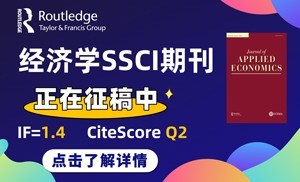




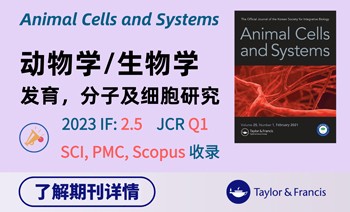


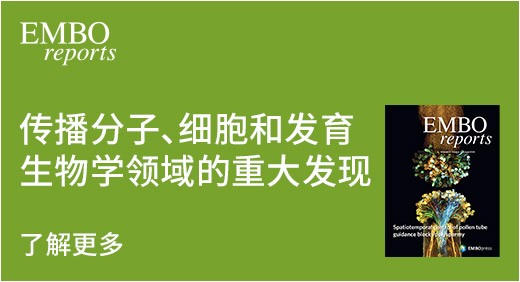

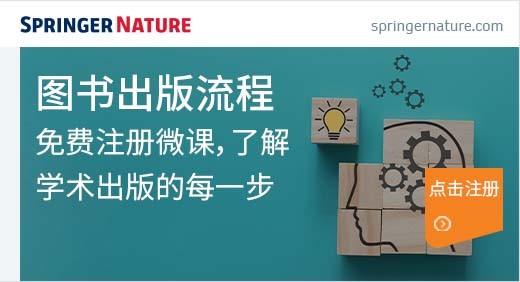

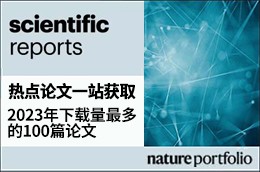


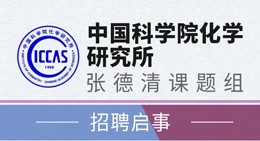
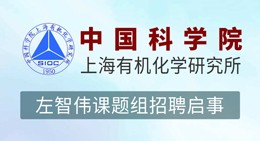
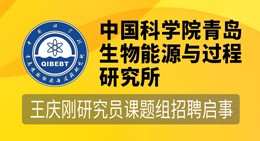
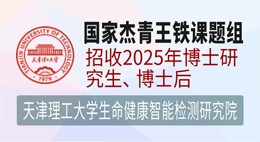


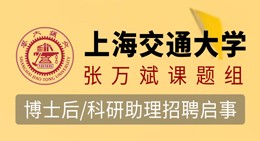
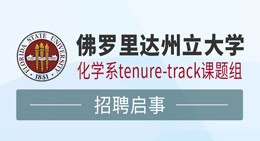
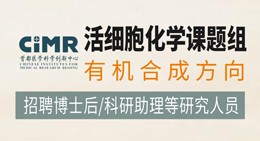
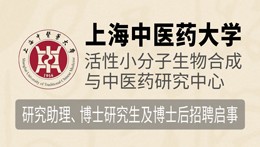



 京公网安备 11010802027423号
京公网安备 11010802027423号